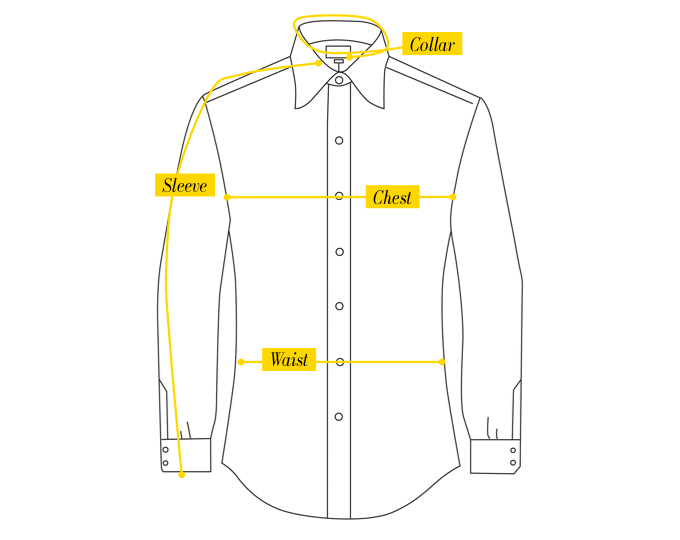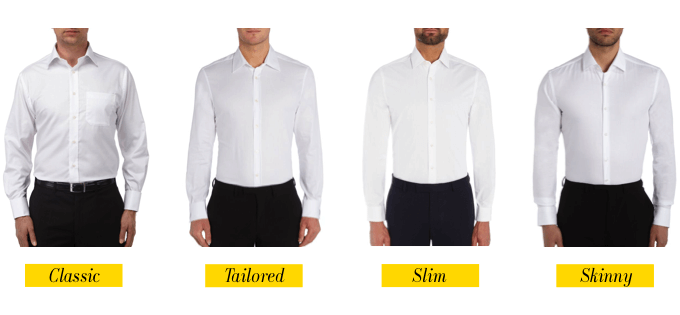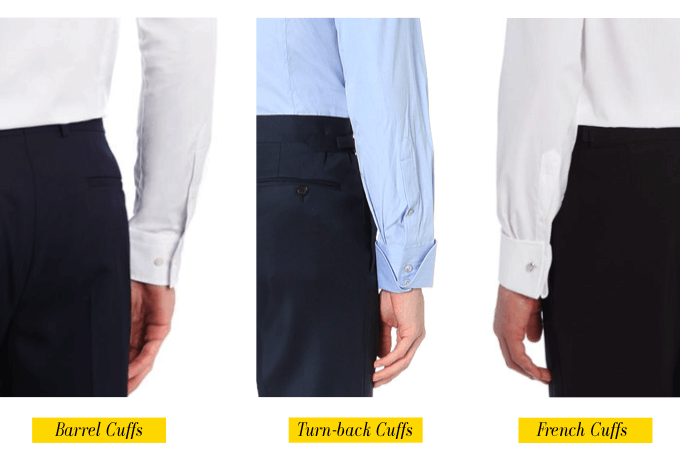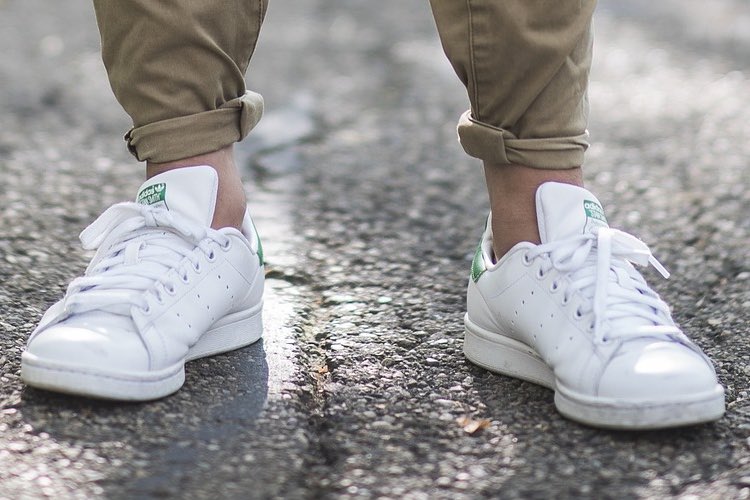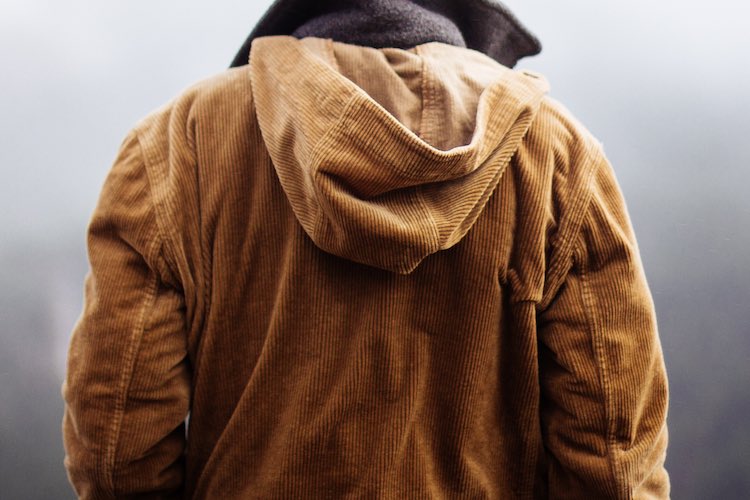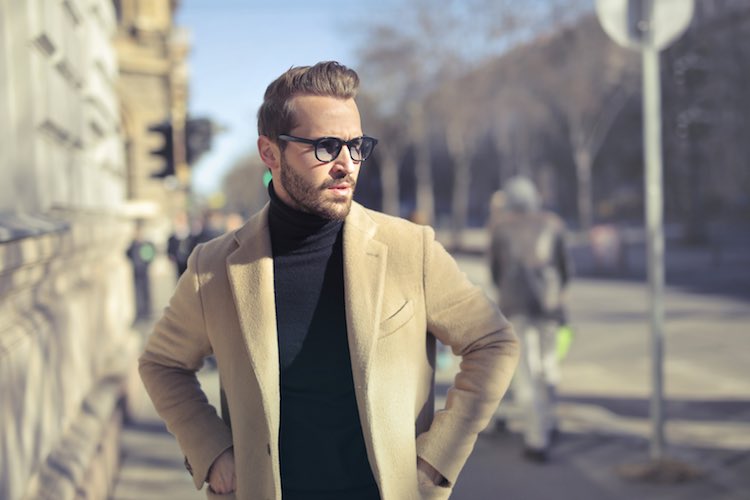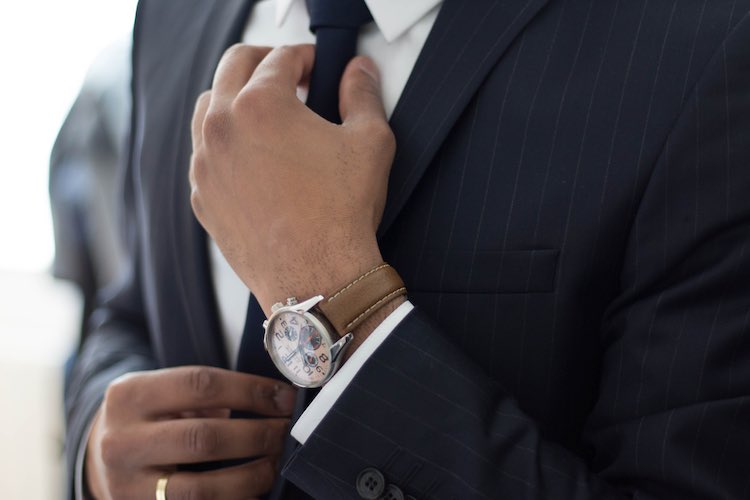
Before you buy a few new shirts make sure you've got your basics in check. From getting measured to cuffs and collars, we've got it covered.
Getting measured
Even if made to measure is a distant dream, it still pays to get measured when you're buying ready to wear shirts.
Many shirt specialists offer ready to wear shirts in a choice of sleeve lengths and size combinations. There are four easy measurements you can take at home using a tape measure – for an accurate result enlist the help of a willing spouse or housemate.
Collar
Measure around the base of your neck where the shirt collar would sit.
Sleeve length
Measure from the centre of the back of your neck, over the top of your shoulder down the arm to where you want your cuff to sit.
Chest
Measure around the full circumference of your chest at the widest point. Ensure that the tape measure lies straight and parallel to the ground.
Waist
Measure around the full circumference of your waist at the narrowest point.
Which shirt fit should I go for?
Ready to wear shirts generally fall into four categories – classic, tailored, slim or skinny fit.
Classic fit
The original and classic cut – less favourably recognisable as the shirt your dad wears. Generously cut in the body & sleeves for comfort with two pleats at the back for added room.
Tailored fit
A more fitted silhouette through the body and sleeves with no back pleats.
Slim fit
The name says it all with this one – a slim fit shirt creates a slim silhouette for a fashionable look. Slim fit shirts often have added back darts for a neat waistline.
Skinny fit
The most hipster of shirts, the skinny fit shirt clings tight to make a statement (and likely to leave you feeling restricted). This is the hardest fit to pull off and like drainpipe jeans should be approached with caution.
Shirt Collar types
Classic collar

Cutaway collar

Variations include the semi-cutaway collar, which lies somewhere in-between classic and cutaway, and the extreme cutaway collar, which is hardly a collar at all with very widespread tips that point towards the shoulders. An extreme cutaway collar is best matched with a slim tie.
Button-down collar
The button down collar is the standard in oxford shirts. Recognizable as each side of this collar fastens to the shirt with a button. Usually button down collars are a casual option and not worn with a tie, however anything goes these days.
Club collar

Small collar

Wing collar or evening collar

Wear a wing collar with a bow tie and a tuxedo jacket to a white tie event. For old school elegance, the collar is best starched with the points standing up to enhance the bow tie.
Shirt Sleeve length
You've got two options, long or short, and that's the short of it. Short-sleeved shirts should never be worn to a formal event.
To check if you've got the right sleeve length, try on the shirt and unbutton the cuffs – when the cuffs are undone the sleeves should fall halfway down your hand.
The cuff should fit snugly so that it stays at the wrist and does not creep down to the top of the hand. About half an inch of cuff should always be on show underneath jacket sleeves.
Shirt Cuff types
The first step is to decide if you'd like to go for a barrel cuff or a French cuff. You'll need cufflinks to close French cuffs, whereas barrel cuffs have button fastenings. French cuffs are more formal and rule supreme when it comes to tuxedo shirts and wedding attire.
Barrel cuffs
If you're going for a barrel cuff you can choose the number of buttons and the shape. Standard ready to wear shirts tend to have single button cuffs but there are also dressier options with two or three buttons.
The greatest advantage of this type of shirt cuff is that you can unfasten additional buttons to subtly reveal a statement watch. Barrel cuff corners can be square or angled depending on personal preference.
French cuffs
French cuffs are two double folds of cloth fastened by a cufflink. They are more formal than barrel cuffs and offer more room for personalisation, the cufflinks you choose can reveal more than you'd think...
Turn-back cuffs
Or if you're having a Bond moment…. you could always go for turn-back cuffs aka cocktail cuffs. Martini anyone?

